Military music – Heritage and remembrance

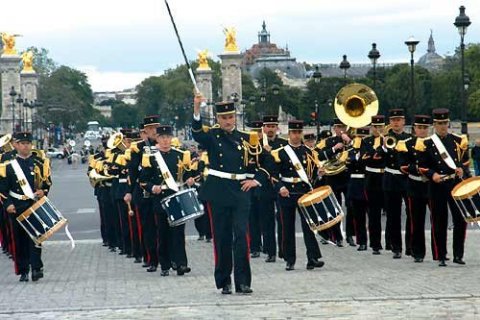
The navy infantry band. Source: SGA/DMPA - Jacques Robert
In 1848, Georges Kastner, the author of a general guide to military music for French armies, wrote: ”Music is the oldest and the most universal of all the arts.” It is true that music occupies a special place in the history of peoples. With the ability to arouse the most pleasurable emotions, music also has the power to produce the purest, most enduring, most noble and even the most sublime affections in a person.
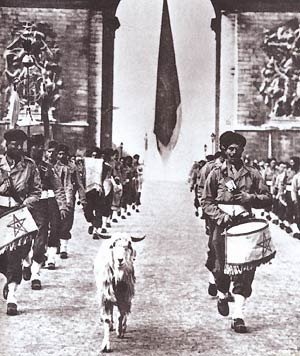
La nouba du 1er RTM lors du défilé de la Victoire en 1945, Paris. Source : 1er R.T.
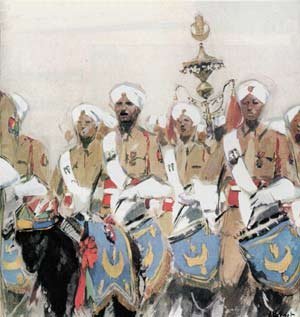
Nouba du 4e régiment de Tirailleurs tunisiens, aquarelle de A. Brenet. Source : 1er R.T.
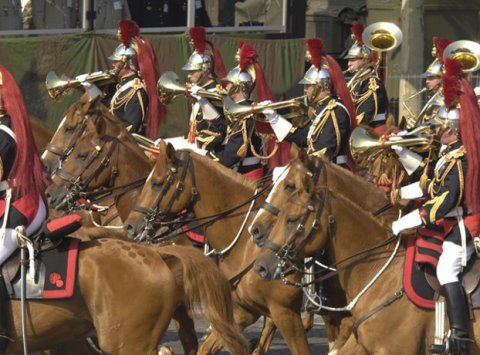
The navy infantry band. Source: SGA/DMPA - JP le Padellec
From the professional army to the conscription army
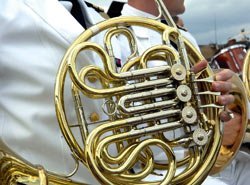
Cor. Source: SGA/DMPA - Jacques Robert
Popular patriotism encouraged by military music
After the Armistice, music bands attracted the audience numbers seen back in 1872. Parades, patriotic ceremonies, concerts, torchlit parades and military musical parades, performing in France and overseas, paid tribute to the faith and confidence bestowed on military bands in the 20th century.
Numerous changes were made to the armies during the course of the interwar period. Tank regiments were formed for the first time and a fanfare granted to them. The ”transmission regiments” were granted a band and the fanfares for engineers and the artillery units were withdrawn and then re-established.
A training school for music second-in-commands was opened in 1930 in Courbevoie; the airforce orchestra (Musique de l'Air) was founded in Paris in 1936. The number of fanfares played by the North African Zouaves and infantry, parading in their full traditional dress, increased with the nouba, the regimental band, and a mascot was dedicated to them: the ram or sheep. Despite the progress of anti-militarism, pacifism and the development of recorded music and radio, military bands still hold an important place for expressing popular patriotism.
From 1946 to the 1950s, the audiences of military formations declined among the wounded population, who associated the music with harsh militarism and warmongering. The numerous changes made to the armies, after the conflicts in Indochina and Algeria, prompted their role to be reconsidered. The military units left their barracks and with their music bands and fanfares moved closer to the population through ceremonies, the presentation of the units' emblems to the new recruits, the concerts and dawn serenades that became more commonplace in the civilian environment and which continue to this day.
For further information:
Contact the Military Conservatory for the Army Orchestra (CMMAT) and its director on +33 (0)1 39 67 20 62.
Source: François-Xavier Bailleul, army bandmaster and director of the military music conservatory of the army (CMMAT). Les Chemins de la Mémoire magazine no. 163 - July-August 2006 for Mindef/SGA/DMPA

